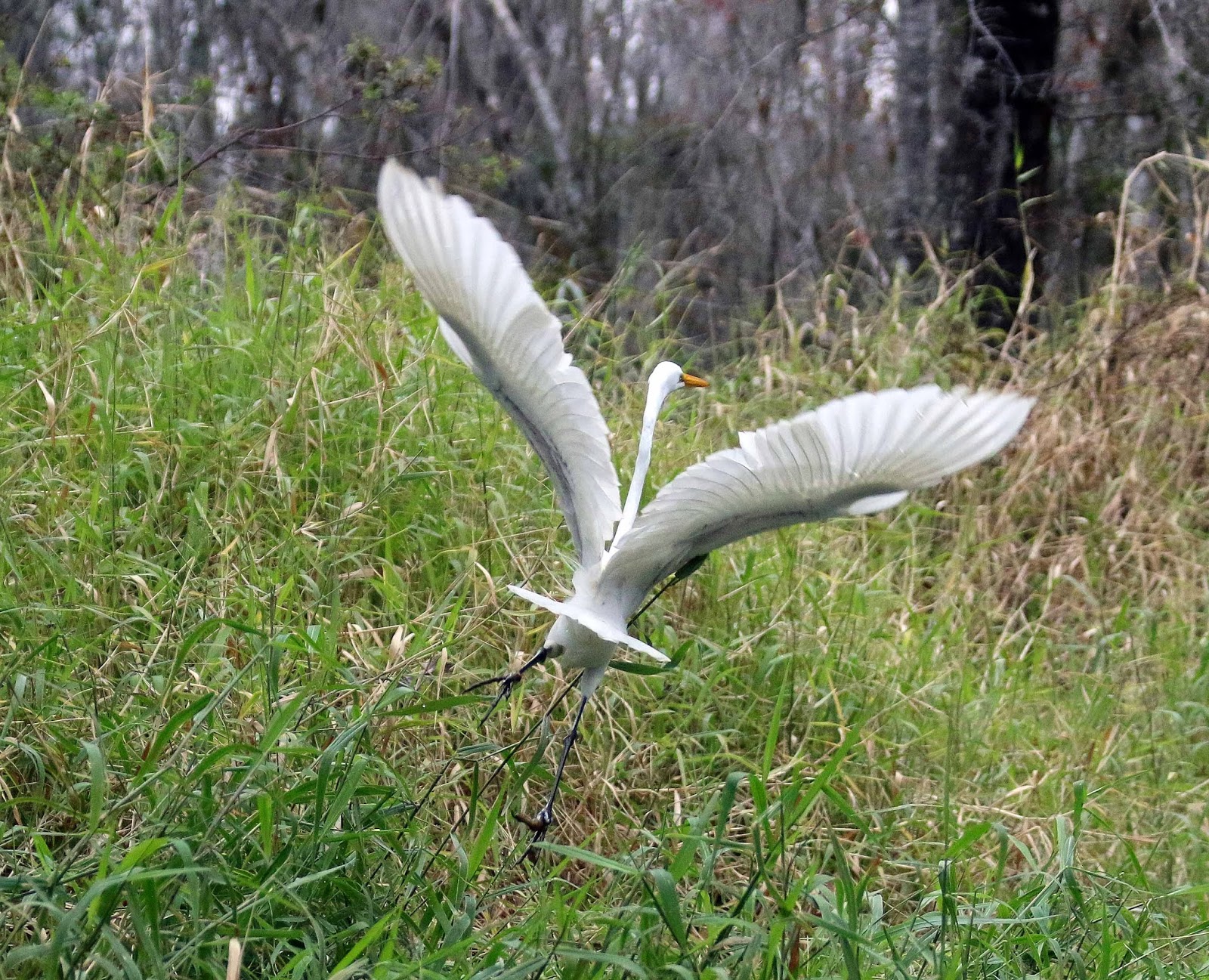Take off is the most energy demanding activity for birds. Imagine that you are standing at the side of the road and something frightens you and you have to immediately run at your very fastest for some time. Sometimes take-off can only happen for large birds if they face into the wind. Bird bones are hollow, body lines are streamlined and wing feathers are not symmetrical so that they have a strong side and a light side all of which aids flight. One research project found that female birds exposed to predators during ovulation produce chicks which grow their wings faster than chicks produced by predator-free females. Their wings are also longer. Both adaptations may make them better at avoiding avian predators. Flight is used to avoid prey, reach new feeding grounds, avoid bad weather and get food for young. Sometimes birds that reach islands where there are no predators and plenty of food lose their ability to fly.
Tuesday, February 11, 2014
Bye Bye!
I do not have a professional telephoto nor do I have the ability to make those joining me on my vacation wait until I get that perfect shot. While I saw a lot birds, and got a few good shots, there were many that got away. These below are some of those, grainy and blurry photos, but their graceful departures are worth noting, I think!
Take off is the most energy demanding activity for birds. Imagine that you are standing at the side of the road and something frightens you and you have to immediately run at your very fastest for some time. Sometimes take-off can only happen for large birds if they face into the wind. Bird bones are hollow, body lines are streamlined and wing feathers are not symmetrical so that they have a strong side and a light side all of which aids flight. One research project found that female birds exposed to predators during ovulation produce chicks which grow their wings faster than chicks produced by predator-free females. Their wings are also longer. Both adaptations may make them better at avoiding avian predators. Flight is used to avoid prey, reach new feeding grounds, avoid bad weather and get food for young. Sometimes birds that reach islands where there are no predators and plenty of food lose their ability to fly.
Take off is the most energy demanding activity for birds. Imagine that you are standing at the side of the road and something frightens you and you have to immediately run at your very fastest for some time. Sometimes take-off can only happen for large birds if they face into the wind. Bird bones are hollow, body lines are streamlined and wing feathers are not symmetrical so that they have a strong side and a light side all of which aids flight. One research project found that female birds exposed to predators during ovulation produce chicks which grow their wings faster than chicks produced by predator-free females. Their wings are also longer. Both adaptations may make them better at avoiding avian predators. Flight is used to avoid prey, reach new feeding grounds, avoid bad weather and get food for young. Sometimes birds that reach islands where there are no predators and plenty of food lose their ability to fly.
Subscribe to:
Post Comments (Atom)














cool shots...i rather like the pink one...interesting too on the evolutionary changes
ReplyDeleteAll wonderful but I especially like the pelican.
ReplyDeleteFabulous, each and every one. Doesn't matter if it's grainy or blurred - you've captured the moment.
ReplyDeleteWow, especially all the views as they unwrapped themselves to fly. Very interesting.
ReplyDeleteAlso the pelican!
ReplyDeleteYou did catch them at just the right time, even if it wasn't the lens you would have wanted. Next time i see a bird taking off, and i have a chance to really watch, i will.
ReplyDeleteThese are wonderful, and that last one is a prize winner.
ReplyDeleteYou picked a very narrow subject for bird photography and then proceeded to show us great photos.
ReplyDeleteI made my way here between sneezes, and must tell you that these are lovely.
ReplyDeleteWow, great shots of wings. After reading your post I could begin to appreciate the many features of the bird's wings and how they assist them in so many different ways. -- barbara
ReplyDeleteYou got some great shots here! All of my bird shots lately are of them flying away, too!
ReplyDeleteThe fifth from the top (bird in flight) is in perfect formation. How did you ever catch that shot? You are amazing.
ReplyDelete